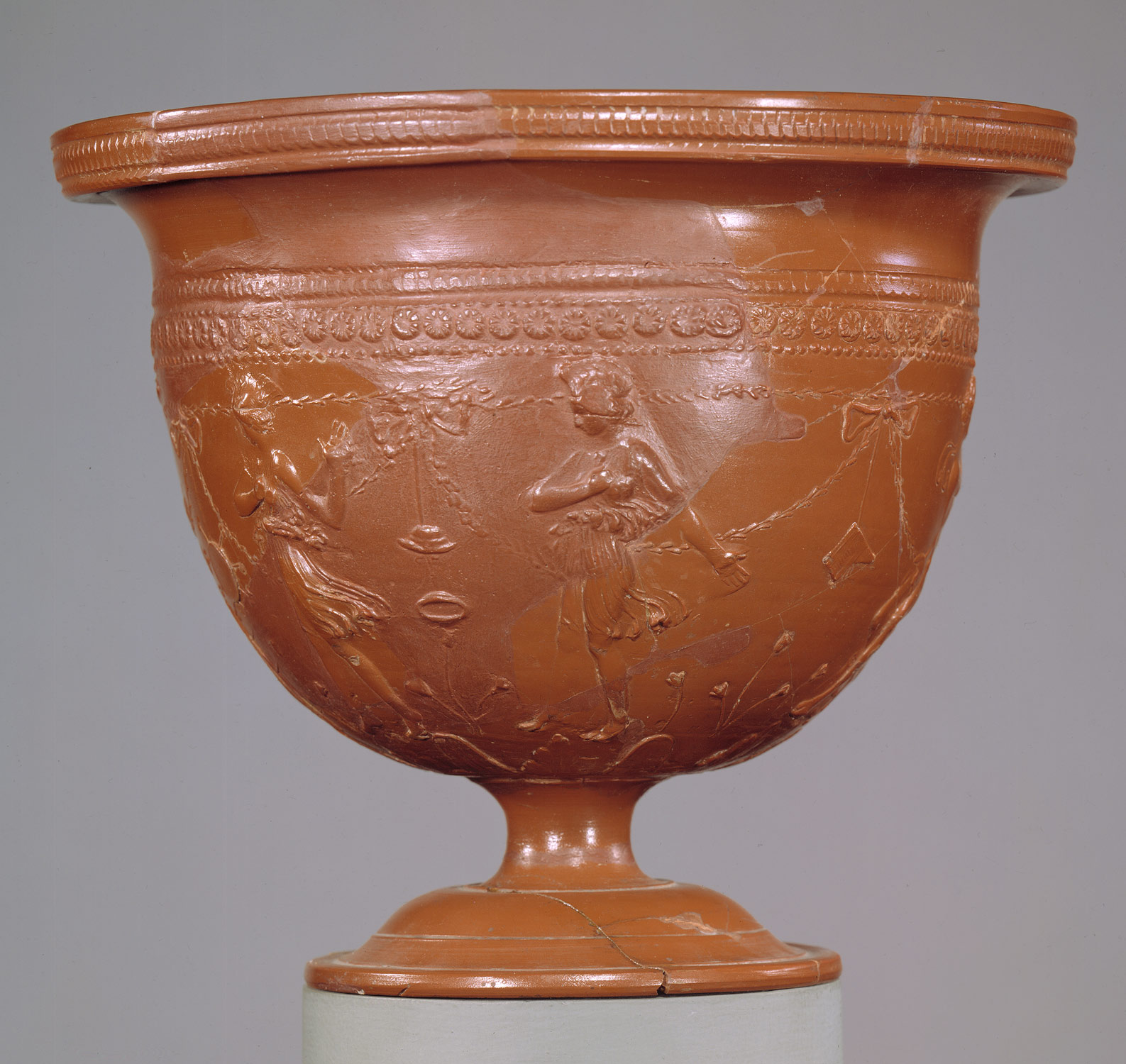On Monday Edition.
My favourite type of Roman pottery is the shiny red fineward known technically as "Italian Terra Sigillata", usually abbreviated to "ITS". Yes, I have a favourite type of Roman pottery. Anyhoo, ITS (also known as "Arretine Ware" or "Samian Ware") first developed in Etruria, in and around the Roman city of Arretium (modern Arezzo) roughly during the middle of the first century B.C. Later, its manufacture spread throughout northern Italy and southern Gaul, before the pottery was finally replaced as the dominant form of fineware in the early second century A.D.
ITS pottery had a number of basic forms. Among them were moulded "chalices," often portraying extremely intricate designs showing scenes from mythology, erotica, bucolic scenes, and the like:

ITS Chalice - Click for larger image.
However, a great many ITS forms were what are generally referred to as "plainware" - pieces of extremely high quality, but without the extensive moulded decoration. Such decoration as exists on these pieces is often applied rather than part of the original moulded vessel. However, the vessels could be completely undecorated, as was often the case with the large platters which were a signature form of ITS:

ITS Platter, top view - Click for larger image.
Helpfully, ITS potters were not shy about stamping their names on their products. Originally, these stamps took a simple rectangular form, as below:

Maker's Stamp of Gaius Sertorius Proculus (or possibly from the workshop of Gaius Sertorius, which the actual craftsman being a slave named Proculus), from Arezzo, 15 B.C.-A.D.5. Click to enlarge.
However, during the later history of ITS, the so-called "foot stamps" became very popular, as well as evidence for a rather whimsical sense of humour. With foot stamps, the maker's name is actual enclosed in the shape of foot, a nod to the stamp's usual location on the foot of the vessel.

Maker's Stamp probably of Quintus Castricius (the meaning of the "VE" at the end is unknown), location unknown, but dating to the latter half of the first century A.D. Click to enlarge.
So, why do I like ITS so much? Well, it is genuinly beautiful pottery, with a smooth, strong glaze. It's also the signature Roman fineware; even though it went out of general use relatively early, it continued to exert stylistic influence over what came after it. Finally, it's one of the forms of pottery with which I am really familiar, which is a weak reason I know, but still...



No comments:
Post a Comment